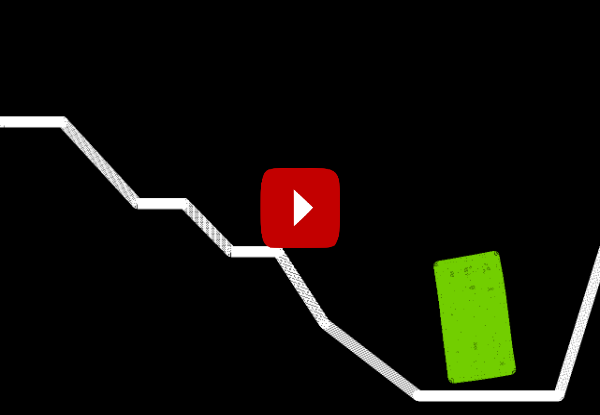I have only two words for you: INCREDIBLY COOL!
I've always wanted to create some kind of simulation related to physics.
And finally, I did it!
P.S. The work I have done is not perfect.
I didn't go deep into formulas.
I didn't try to create a comprehensive universal soft body engine.
Not at all.
I am driven only by wild curiosity, what are you talking about? :D
Everything written below is just a crooked interpretation of the coolest articles on soft body physics.
Want two-page formulas and buzzwords? Google it! :3Who seeks will find.
Whoever goes will come.
Those who google will not notice the answer in the first link.
Well, let's understand how soft body simulation works.
First, we need to understand what the body itself is. And by the way, it won't take long to find the answer (that's why I'm here lol):
- Particles
Yes, particles are everywhere.
It is from these little freaks that everything around us consists: the phone that you hold in your hands, and the hands themselves.
And, you know, if you want to create a soft body, you don't have to beat around the bush - steal the idea from nature!
So, okay, we have particles. But what exactly are they?
Here is the basic set of properties for each particle:
- location
- velocity
I mean, it's pretty primitive.
We have a particle location (x, y) and a velocity vector.
It remains for each frame to update the location, adding velocity to it.
It's all? Do we have a soft body?
Lol, no.. :D
Having only particles, you can get, for example, a gas, but obviously not a soft body, because, as you know, a body is a body, because it is an ordered set of interconnected particles (crystal lattice).
And, if we were making a regular rigid body, we wouldn't even have to tie anything.
But here's a soft body..
It should behave like jelly, or any other soft object, that is, deform, and then recover.
And the «Spring Mass System» will help us to achieve this effect.
I will not retell smart definitions from Wikipedia, but I will explain in simple words:
Our task is to split the particles into pairs. Each pair forms a spring.
Next, we need to go through all the springs (pairs of two particles) and, based on some data, calculate the next position of the particles in space.
Thus, the particles become bound to each other.
And the system of spring masses allows you to achieve the effect of jelly, since when the particles move away from each other, they are forced to move towards each other (spring compression), otherwise, if the particles are too close to each other (closer than a certain distance / state of rest), they forced to move in opposite directions (stretching the spring).
Summarizing the above, we have:
- Particles
- Springs (a pair of two particles)
This is actually enough to create a soft body.
Well, let's briefly go through the main steps:
- Create particles.
- Connect them with springs.
- Iterate through the springs every frame and apply all sorts of tricky formulas to achieve the spring effect (move away the particles - they return to each other; bring the particles closer - they push each other with all their might; stretch the spring and release it - it will contract and stretch, making harmonic oscillations, until it reaches a state of rest).
Apart from the spring mass system, you will probably need a gravity simulation (just add a constant to the y-axis of the velocity vector every frame), a collision resolution algorithm (because you don't want your soft body to fall forever) and a lot of curiosity (no way without it)!

-
But How DO Soft Body Simulations Work? by Gonkee